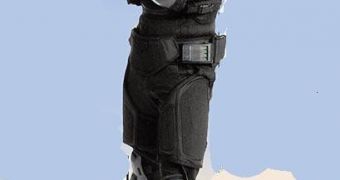Science fiction materials have turned real. Steel strong plastic has been created by a team at the University of Michigan by imitating the brick-and-mortar molecular structure of the seashells. But unlike steel, the new material is lighter and transparent, even if not stretchy enough.
The new plastic is built of layers of clay nanosheets and a water-soluble polymer similar to white glue.
"Nevertheless, its further development could lead to lighter, stronger armor for soldiers or police and their vehicles. It could also be used in microelectromechanical devices, microfluidics, biomedical sensors and valves and unmanned aircraft," said co-author Nicholas Kotov, engineering professor.
Individual nanomaterial building blocks like nanotubes, nanosheets and nanorods are extremely strong, but previous larger materials made of them were comparatively weak.
"When you tried to build something you can hold in your arms, scientists had difficulties transferring the strength of individual nanosheets or nanotubes to the entire material. We've demonstrated that one can achieve almost ideal transfer of stress between nanosheets and a polymer matrix." said Kotov.
The novel composite plastic was achieved with a machine that places one nanomaterial layer after another, consisting of an arm that hovers over a wheel of vials of various fluids.
Now, the arm employed a glass the size of a stick of gum on which the novel material was made. The glass was dipped by the arm into the glue-like polymer solution and then into a fluid representing a dispersion of clay nanosheets. When the layers dried, the operation was repeated.
300 layers of each glue-like polymer and the clay nanosheets resulted in a piece of plastic as thick as a plastic wrap. This is exactly how clams built layer by layer the mother of pearl, one of the most resistant natural materials, built from minerals (basically calcium carbonate).
The glue-like polymer (polyvinyl alcohol) had the role of sticking together the nanosheets. The nanoglue-nanosheet structure resulted in cooperative hydrogen bonds, inducing "the Velcro effect": when broken, the bonds reformed rapidly in a new place. This explains the strength of the material and an important contribution is brought by the brick alternating arrangement of the nanosheets.
"When you have a brick-and-mortar structure, any cracks are blunted by each interface. It's hard to replicate with nanoscale building blocks on a large scale, but that's what we've achieved." said Kotov.

 14 DAY TRIAL //
14 DAY TRIAL //